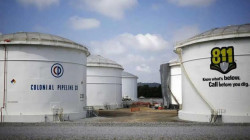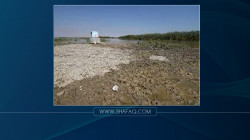Water resources to become less predictable with climate change

Shafaq News / Water resources will fluctuate increasingly and become more and more difficult to predict in snow-dominated regions across the Northern Hemisphere by later this century, according to a comprehensive new climate change study led by the National Center for Atmospheric Research (NCAR).
The research team found that, even in regions that keep receiving about the same amount of precipitation, streamflow will become more variable and unpredictable. As snowpack recedes in a warmer future and fails to provide reliable runoff, the amount and timing of water resources will become increasingly reliant on periodic episodes of rain.
“Water managers will be at the whim of individual precipitation events instead of having four-to-six months lead time to anticipate snowmelt and runoff,” said NCAR scientist Will Wieder, the lead author. “Water management systems in snow-dominated regions are based on the predictability of snowpack and runoff, and much of that predictability could go away with climate change.”
Observations show that snowpack is already melting earlier, and even declining in many regions. This decline will become so pronounced toward the end of the century that the amount of water contained in snowpack at the end of an average winter in parts of the U.S. Rocky Mountains could plummet by nearly 80 percent, the scientists found.
The changes in runoff and streamflow are likely to have cascading impacts on ecosystems that depend on reliable water from snow, the study warns. Although the changes won’t be uniform across regions, more snow-free days and longer growing seasons will put stress on water resources, drying out soils in many areas and heightening fire risk.
The study assumes that emissions of greenhouse gasses continue at a high rate (a scenario known as SSP3-7.0). Wieder said that the most severe impacts on snowpack, runoff, and ecosystems would likely be avoided if society successfully reduced greenhouse gas emissions.
The scientists drew on an advanced set of computer simulations to fill in details about the future of water resources, showing the extent to which changes in temperature and precipitation will alter snow accumulation and runoff patterns in the Northern Hemisphere. Although past research looked at the impacts of climate change on water availability, the new study focuses on the increasing variability of water resources.
The study is being published the week of July 18 in the Proceedings of the National Academy of Sciences. It was funded by the U.S. National Science Foundation, which is NCAR’s sponsor.
Many regions of Earth rely on the accumulation of snow during the winter and subsequent melting in the spring and summer for regulating runoff and streamflow. For years, however, scientists have warned that the snowpack will become thinner and melt earlier as more precipitation during the colder months falls as rain instead of snow, and as melting occurs at times during the winter instead of the spring runoff season.
(WaterWorld)





